Château-Thierry in Dormans
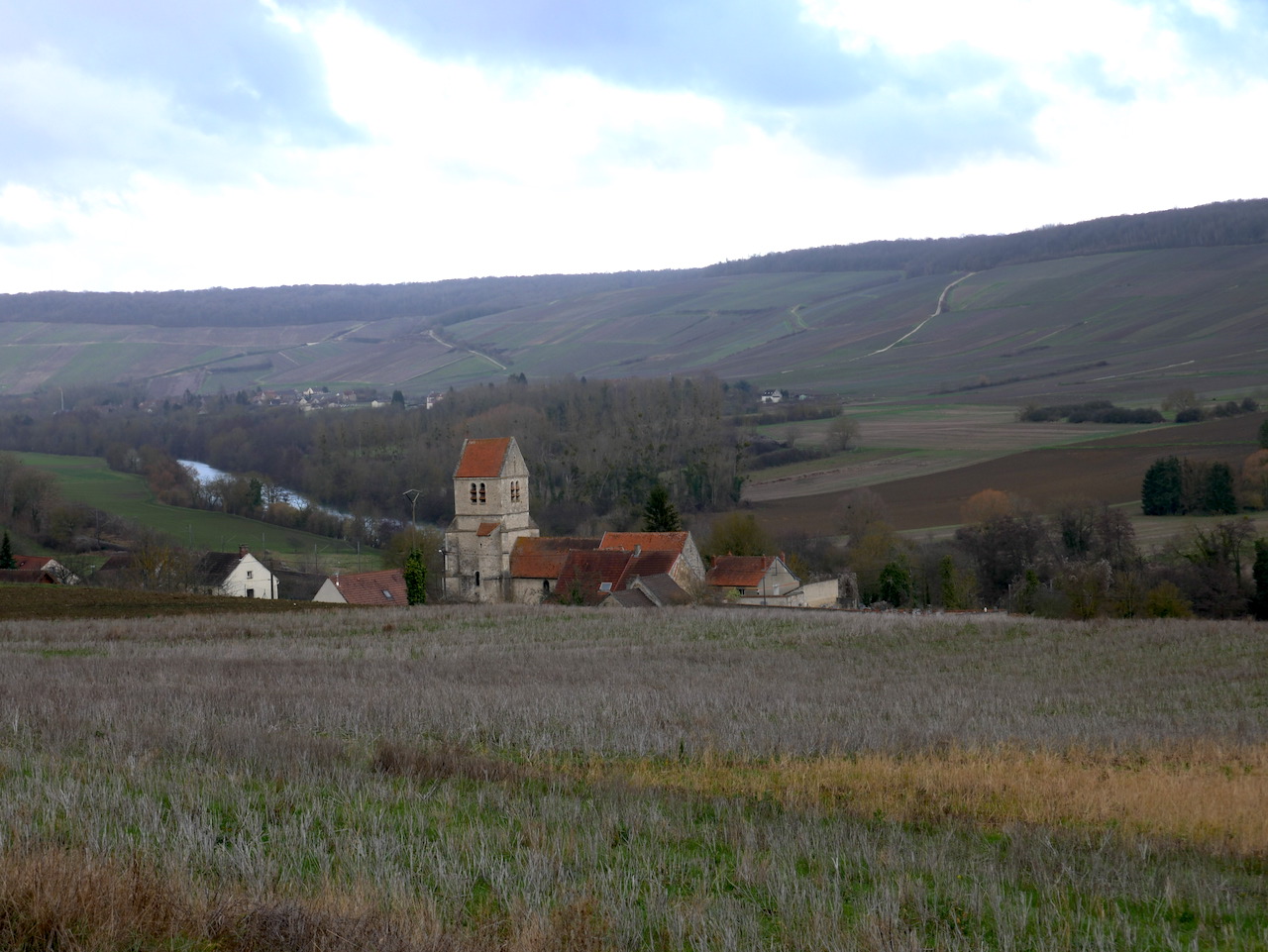
Hauts-de-France
1. Château-Thierry in Dormans
Medium
6h30
24,8km
+526m
-529m
Step
Embed this item to access it offline
During this day you will follow the Marne valley on the hillside, alternating woods and vineyards, before walking on the river bank, which was often used by Columbian monks.
9 points of interest
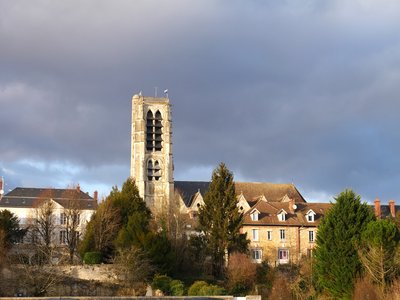
Église Saint-Crépin de Château-Thierry - Association Colomban en Brie TouristChurch Saint-Crépin de Château-Thierry
After the Revolution, the church of Saint-Crépin groups together three parishes, Saint-Martin, of which a chapel remains, Notre-Dame du Château, whose church was destroyed, and Saint-Crépin.
The church of Saint-Crépin is mentioned in a papal bull of the goods of the abbey of Chézy in 1155.
The present building was built in the 15th and 16th centuries. From the XIIth century and until the Revolution the parish gathers the inhabitants settled inside the ramparts except the castle which is administered to the spiritual by the church Notre-Dame du Château.
During the Middle Ages it was administered by the monks of the Saint-Pierre Abbey in Chézy-sur-Marne.
Inside you can see the 15th century organ case with its balustrade composed of statuettes typical of the Renaissance. Chair of the 18th century, the statues of the Choir date from the 19th century, they represent Saint-Martin, Saint-Crépin, Saint-Jean...
Some paintings decorate the walls of the church. The most remarkable of them is certainly the large painting by Joseph Vivien (1657-1734) depicting the Baptism of Chris. An academician and official painter at the Bavarian court, Vivien is best known for his pastel portraits. This deep-coloured painting is one of her rare productions in the field of religious painting. Its exact date and circumstances of acquisition are not known. The church owns two other 17th century paintings: an anonymous Holy Family (depicting the Rest during the flight to Egypt) and a copy, in very poor condition, of the Incredulity of Saint Thomas of Guerchin.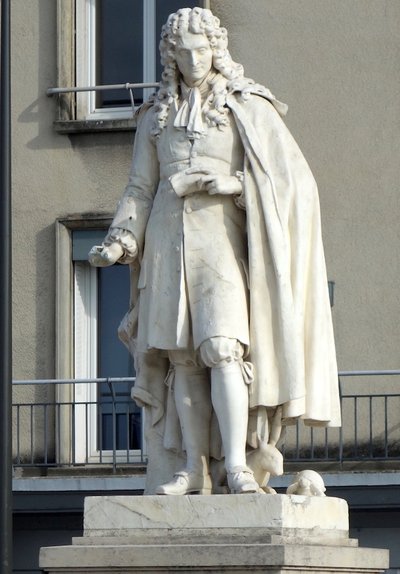
Jean de la Fontaine à Château-Thierry - Association Colomban en Brie CulturalBirthplace of Jean de la Fontaine in Château-Thierry
Charles de La Fontaine, father of Jean de La Fontaine is Master of Water and Forests at Château-Thierry. He lives with his family in a private mansion located at the foot of the old castle massif, next to a convent in Cordeliers. It is there that Jean de La Fontaine was born on 8 July 1621. On the death of his father in 1658, Jean de La Fontaine inherited his position as Master of Waters and Forests and the house. He was forced to sell the house in 1676 due to financial difficulties.
In 1869, members of the Historical and Archaeological Society of Château-Thierry, led by Alphonse Barbey, obtained an agreement of sale from the owners of the house where Jean de La Fontaine was born. In 1876 a first collection of works allowed the museum to be opened in the house where the poet was born.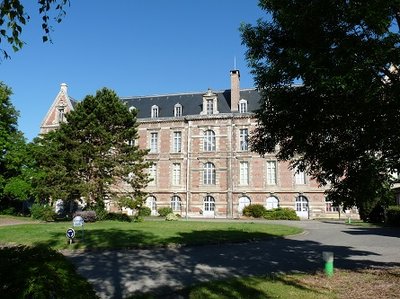
Façade sud de l’Hôtel Dieu à Château-Thierry - Les portesdeChampagne. com HistoricalL’Hôtel Dieu de Château-Thierry
The Hotel Dieu, founded in 1304 by Jeanne de Navarre, wife of Philip IV the Fair, was a modest establishment until the time of Louis XIV, who endowed it with several offices for lepers scattered throughout the region.
In the XVIIth century, the nuns of Saint-Augustin occupied the establishment and generous donors financed the extension work. Their mausoleums can be seen in the chapel.
The complex was destroyed in 1870 to rebuild a hospital.
It is with the death of the last Augustinian nun in 1966 that the awareness around the remarkable heritage that constitutes the Treasure of the hotel-God goes back to the last Augustinian nun's death. The hospital moved a few years later to the north of the city, freeing up space for a museum that will be inaugurated in 2010 that retraces the history of the Hôtel Dieu.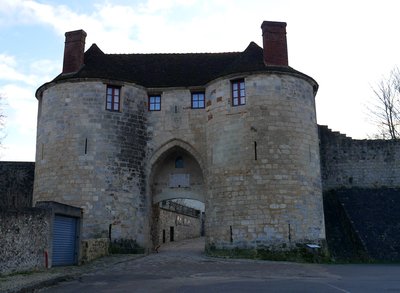
Porte Saint-Jean du Château à Château-Thierry - Association Colomban en Brie HistoricalThe castle of Château-Thierry
Archaeology has identified an occupation of the mound from the 4th to the 4th century probably on an ancient castrum.
At the end of the 9th century, a wooden wall with a stone tower was identified by archaeologists.
Thibaud II, Count of Champagne, had the first stone enclosure built in 1130. During the 13th century the imposing Saint-Jean gate was built and the ramparts were raised to make the fortified village more imposing. After a long period of political instability, Château-Thierry was given to Antoine the Bastard of Burgundy by Louis XI in 1478. He was the last to make major changes to the old medieval fortress. First of all, he created a dry ditch in the centre of the esplanade. The northern escape is equipped with two casemates that defend the bottom of the ditch. A sleeping bridge followed by a drawbridge allows to cross this ditch. These structures give onto a new gatehouse leaning against the Thibaud tower. The latter is levelled to be transformed into an artillery platform. Linked to this new use, an ammunition depot and powder magazine was added to the south of the tower in the form of a long corridor which is accessed by a door to the west.
During the Revolution the castle became a National Property and was sold as a stone quarry in 1793. In 1813 Napoleon's soldiers gave it its present appearance by lowering the walls to install artillery batteries.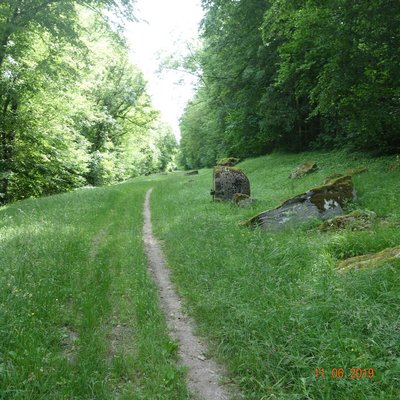
La Via Columbani sur l’aqueduc dans la forêt de Reuilly Sauvigny. - Association Colomban en Brie HistoricalThe Dhuys Aqueduct at Étampes-sur-Marne
This 131 km long aqueduct supplied Paris (and now Eurodisney in Marne-la-Vallée) with drinking water. It was built in 1865 on the initiative of Haussmann and under the control of Belgrand. This remarkable work presents a continuous slope of 15 cm per Kilometre and cast iron siphons allow the crossing of the 21 valleys. The water takes 3 days from the source to its point of use and provides 20000 m3 per day. The manholes every 500 m are characteristic.
L’entrée de l’église Saint-Cyr de Blesme - Association Colomban en Brie TouristKirche St. Cyr und St. Juliette von Blesme
The church is placed under the patronage of Saint Cyr and Saint Juliet, it consisted in its primitive state of a simple nave finished by a choir with a flat chevet. Only the choir and the portal remain from this church. These parts are attributed to the second half of the reign of Louis VI (around 1130). The nave was rebuilt between the end of the 15th and the beginning of the 16th century, after having been destroyed by a fire, a side aisle was added on the south side. Souliac Boileau mentions in 1860 a legend about the source Saint-Cyr located about 15 meters from the church portal, attributing to him the cure of fever and jaundice. In 1858, the town council decided to build the present bell tower.
The bell tower in campanile is original for the region.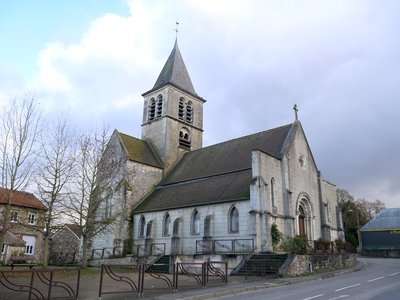
Église Notre-Dame à Crézancy - Association Colomban en Brie TouristNotre-Dame de Crézancy Church
The construction of the first church Notre-Dame de Crézancy dates back to the 12th or 13th century with its Romanesque portal.
Having undoubtedly suffered great damage during the wars of religion, the church was in ruins in the 17th century (parish registers). Important works are undertaken from 1670: the choir, the bell tower and the nave are rebuilt.
The church of Crézancy was rebuilt in the 1840s.
The church is not open to the public.
L’église de Rueilly-Sauvigny devant la Via Columbani - Amis de saint Colomban TouristSaint-Martin de Reuilly-Sauvigny Church
This Romanesque church has a massive bell tower with imposing buttresses.
Its history is not known.
L’église Saint-Hippolyte de Dormans depuis la rive droite de la Marne. - Association Colomban en Brie TouristSaint-Hippolyte Church of Dormans
The Church of St. Hippolytus dates back to the 11th century and its bell tower retains the traditional shape of the bell towers of the central provinces, although the details are already completely Gothic. The church of Dormans is small and its transepts are less wide than the nave and choir. The intersection of the crossing therefore gave a barlong plan. It is on this base that a central bell tower was erected.
In the central bell tower of Dormans, except for a base taken in the height of the attic, there is only one floor completely up to date. The crowning of this bell-tower consists today of four gables or "gâbles" of equal height, but with unequal bases, and two attics penetrating with four gargoyles at the fall of the gutters. But this coronation dates from the 15th century.
Description
Leave the square in front of the Saint-Crépin church in Château-Thierry by walking along the building, rue Saint-Crépin, cross the avenue de Soissons, straight ahead, first street on the right, Grande Rue. On the right, place de l'Hôtel de Ville, rue du Général de Gaulle, direction Marne that you cross, straight on rue Carnot, cross the false Marne, straight on place Paul Doumer, avenue de Montmirail, cross the railway line.
- Turn left at the crossroads, avenue Ernest Couvrecelle, right at the roundabout, rue Pierre Semard, straight up the stairs towards the church, go around the building on your left, rue Abel Simon, right after the church chevet, rue du Tilleul.
- At the crossroads turn left, take the road on the left 20 meters between two properties at the crossroads on the left you walk on the Dhuis aqueduct road, straight ahead at the crossroads enter the wood, follow the edge of the wood on your right, cross the cemented wine road, red and white markings.
- Stay on the aqueduct road, cross the D87, rue Maurice Clausse, enter the woods, stay on the main aqueduct road, right at the junction D143, left at the end of the cemetery, red and white markings, stay on the aqueduct road, cross the D1003 twice while walking through the vineyards and cereal fields.
- On the left at the crossroads of the TV relay, on the right go down a dirt road towards the centre of the village, rue du Crochet, straight ahead at the crossroads rue du Crochet, on the left D4, rue de l'Eglise, on the right crossroads rue de Paris D1003,
- Exit Crézancy after the stream Le Surmelin, turn right on the D85 direction Connigis, rue de Launay, first street on the left, Route Impériale on the left go up into the vineyard, red and white markings, straight ahead on the main road in the forest.
- At the crossroads of the four roads, first on the left go down towards Reuilly-Sauvigny, rue du Vigneux, on the right cross the Rue de Paris D1003, rue Saint-Blaise, on the right in front of the church cross the railway on the right along the Marne towpath to Dormans.
- Pass under the suspension bridge of Dormans, take the small tunnel under the railway, cross the car park on the left, rue Denfert-Rochereau at the crossroads with D3, take the alley on the left you arrive in front of the church Saint-Hippolyte de Dormans.
- Departure : Church St Crépin, 1 rue de la Madeleine, 02 400 Château-Thierry
- Arrival : St. Hippolyte Church, 6 rue des grands remparts, 51 700 Dormans
- Towns crossed : Hauts-de-France and Grand Est
Altimetric profile
Report a problem or an error
If you have found an error on this page or if you have noticed any problems during your hike, please report them to us here:
Close by7
- Accommodation







